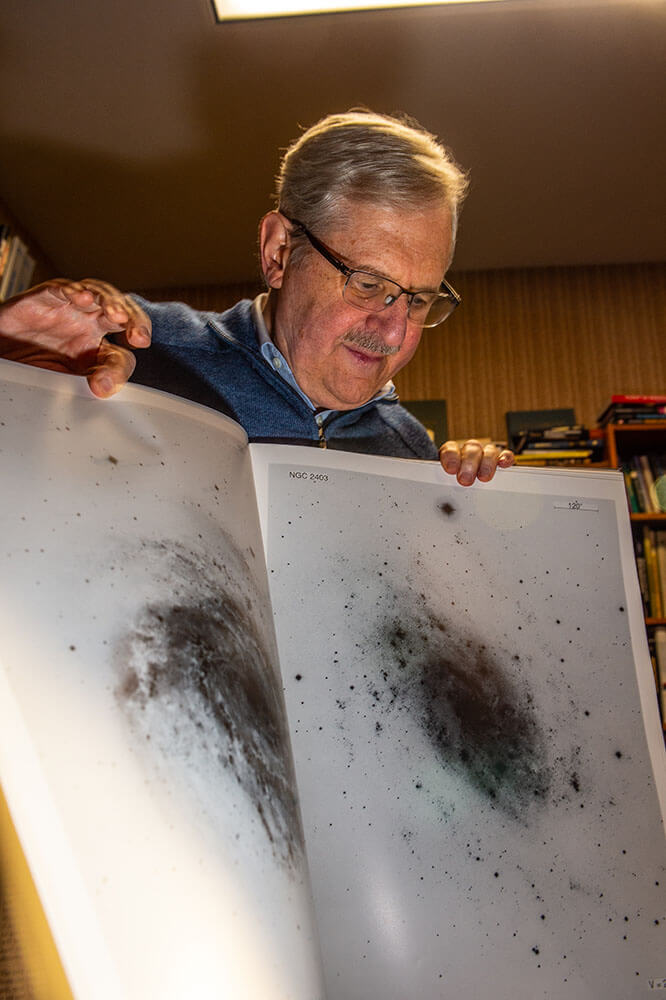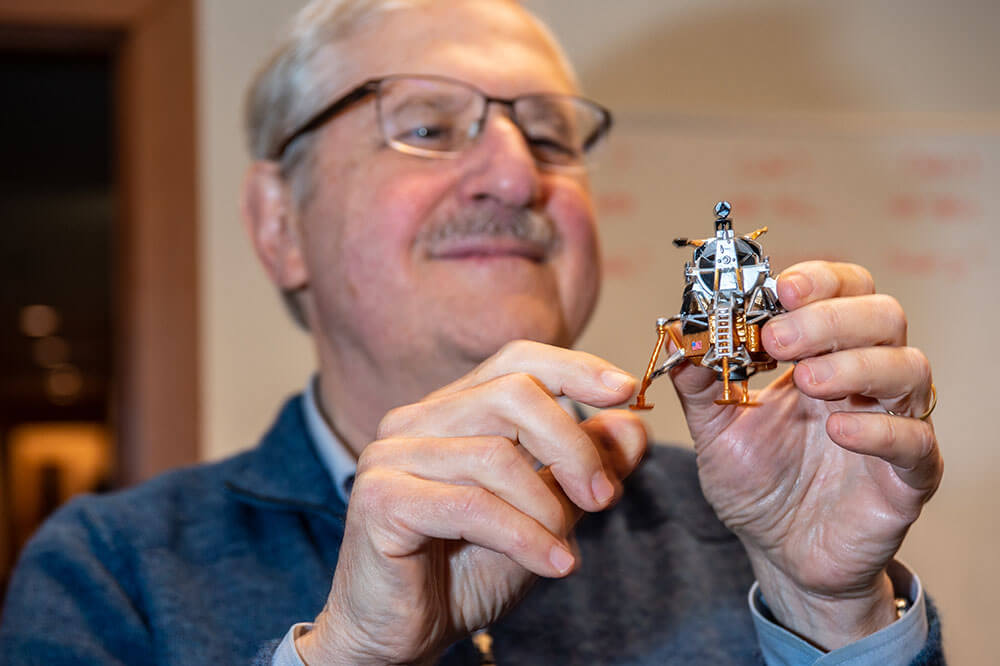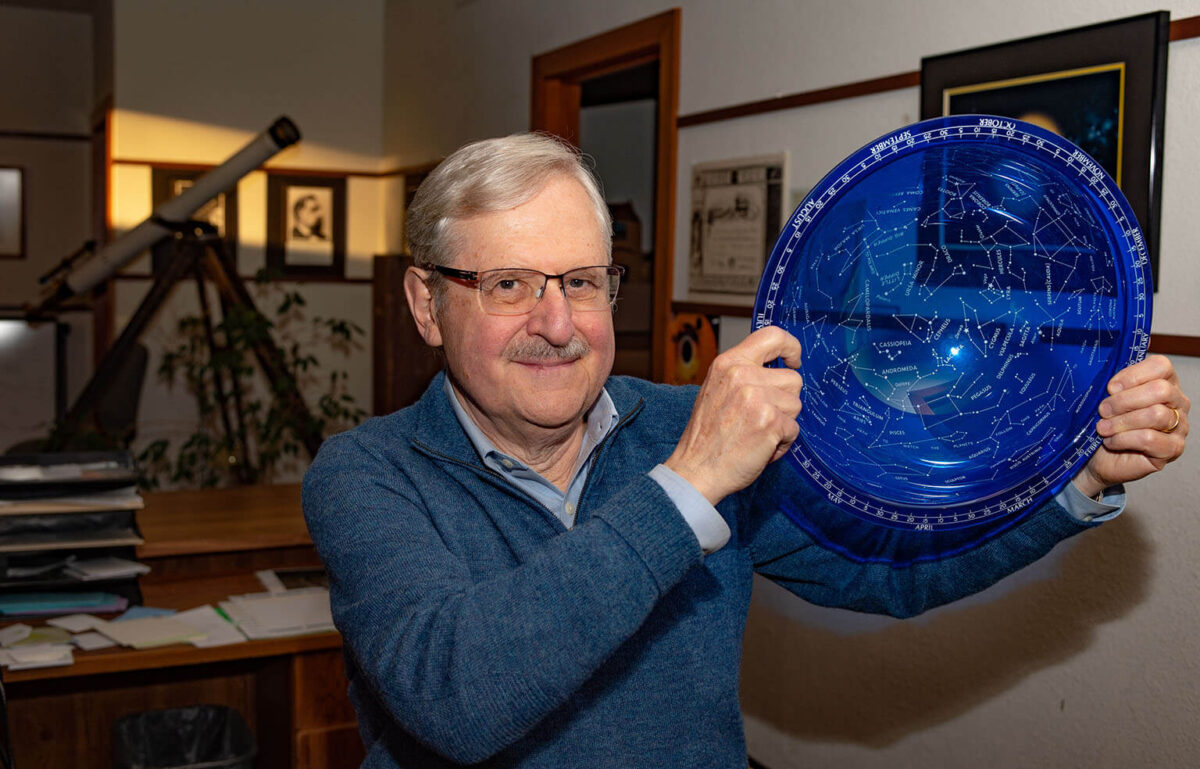Words by Jennifer Jory
Andrew Fraknoi is a man on a mission—a space mission, that is. For decades, he’s inspired and educated both students and the public on the wonders of astronomy, from Foothill and Cañada colleges to San Francisco State University. “This is the golden age of astronomy,” Andrew declares. From radio stations and local TV to The Today Show, he’s become the Bay Area’s go-to astronomer for explaining celestial phenomena in down-to-earth terms. “My focus right now is to interpret the complex and abstract things we are learning about the universe so that people can understand them,” he says.
Born in Hungary, Andrew and his family fled during the 1956 revolution against communist rule, and ended up in an Austrian refugee camp. From there, they ultimately made their way to New York. “I didn’t speak a word of English,” Andrew recalls. “My mother had the idea of using comic books to teach English to me, and I particularly loved space comics.” He soon graduated to science fiction, and when it came time to choose what to study in college, astronomy was his first choice. “Eventually, I realized I could do space stuff for a living,” he beams.
Andrew’s excitement builds as he discusses the latest astronomical discoveries. “It looks like Star Trek was right,” he says with a smile. “There really are planets around other stars.” In 1995, the common perception was that there were just a few planets outside of our own solar system, Andrew explains. “Now we know there are other suns and 5,000 planets orbiting those suns or stars.” Recent breakthroughs and advances in astronomy are thanks to the James Webb Space Telescope.

“This is the biggest telescope we have ever had in space, allowing us to look back to the beginning of time,” he marvels. While light travels swiftly, the incredible distances mean that the images show galaxies as they appeared a very long time ago. “We are now seeing things 13.4 billion years old that are very close to the big bang,” Andrew adds, referring to the theory of the universe’s origin 13.8 billion years ago. “The earliest galaxies and structures are so far away and so long ago, they are amazing.”
Educated at Harvard University and UC Berkeley, Andrew’s career as an astronomer took off in 1978 when he was hired as the executive director of the Astronomical Society of the Pacific. Fourteen years later, working 80 hours a week at his job and newly married to his wife Lola, he realized the pace was unsustainable. In search of a less intense job, he applied for a teaching position at Foothill College in Los Altos Hills, where he was quickly hired and began a new devotion to teaching about space full time. “It was a very good fit,” he notes. “They have a lovely observatory run by a group of astronomy hobbyists and it was a job where I could have a life. I was there for 25 years and we grew the program significantly.”
Andrew also taught at Cañada College in Woodside, where the enthusiastic public affairs officer connected him with KGO radio. He soon became a regular, and could also be found sharing his astronomical insights on KQED TV. “I was a cheap imitation of Carl Sagan,” Andrew says humbly. The scientific community thought otherwise and the International Astronomical Union recognized his achievements by naming Asteroid 4859 “Asteroid Fraknoi.”

While teaching at Foothill, Andrew saw an opportunity to make astronomy education more widely available by creating a lecture series in the college’s 950-seat theater. Called Silicon Valley Astronomy Lectures, it featured Nobel Prize winners and best-selling authors. NASA took an interest in the program and offered to sponsor it. “Foothill College administrators were so enthusiastic they allowed us to use the theater for free,” Andrew recounts. Soon Andrew began making the scientific talks available on YouTube so that anyone interested in space could hear from experts. “These nerdy lectures have received 4.1 million views,” he grins. “The astronomer Alex Filippenko’s videos explain the James Webb telescope, and it is like watching Columbus get his ships ready.”
Andrew’s other focus centers on the search for life on other planets, which he pursues enthusiastically as a board member of the non-profit SETI Institute, headquartered in Mountain View. “This is the most exciting unsolved mystery in the universe,” he says. “Before I die, I would love to find out if there are other life-forms out there with whom we might talk about philosophy. Being involved with the search for life has been a gratifying part of my career.” He also wants to set the record straight when it comes to unidentified flying objects. “There is not a shred of evidence that UFOs are alien space ships.”
In the search for intelligent life on other planets, Andrew cites Artificial Intelligence as a game-changing technology when it comes to listening for messages. “You have to look through many stars, through many channels, over a long period of time,” he describes. “With AI, computers and telescopes can work together, while the astronomer sleeps. AI can search for pattern recognition, which is key to searching for messages from space.”

Andrew’s passion to teach the marvels of the universe keeps him on the lecture circuit promoting space education for all. He currently teaches at San Francisco State University’s Osher Lifelong Learning Institute and offers classes like “If There Are Planets Everywhere, Where Are the Aliens?” and one on simplifying the theory of relativity without math called “Einstein Without Tears.” His commitment to communicating scientific concepts in layman’s terms has culminated in his free, online astronomy textbook that has become the most widely used volume on the subject.
Andrew doesn’t just write textbooks, he’s also tried his hand at science fiction. His childhood passion for the genre of the fantastic and intergalactic is still burning bright all these years later. “I have been keeping a notebook of ideas for decades,” he confesses. Despite what he calls “rejection slips from all over,” eight of his sci-fi stories have been published. Andrew now pays it forward to the next generation of future astronomers by writing the kinds of stories that captured his imagination as a young immigrant—a little inspiration for anyone else who wants to reach for the stars.
Editor’s note: This story corrects errors that appeared in the February 2025 print edition.


